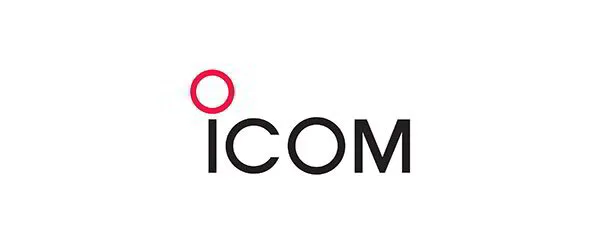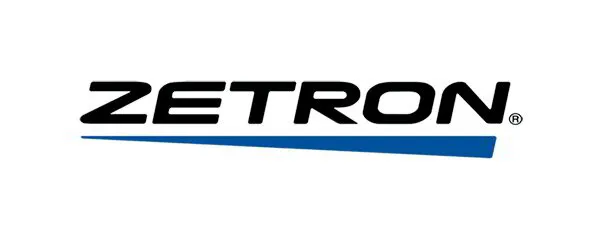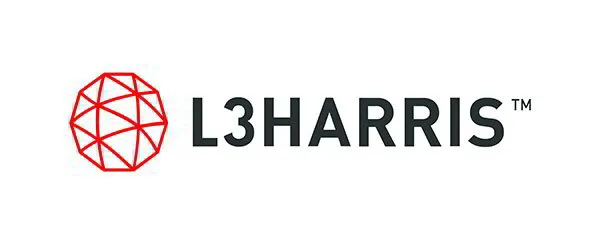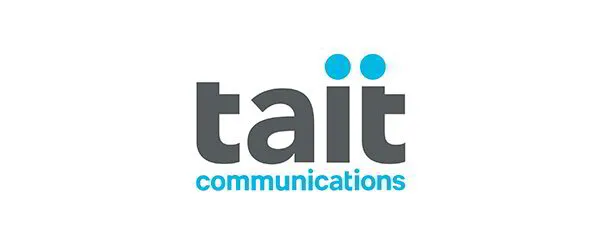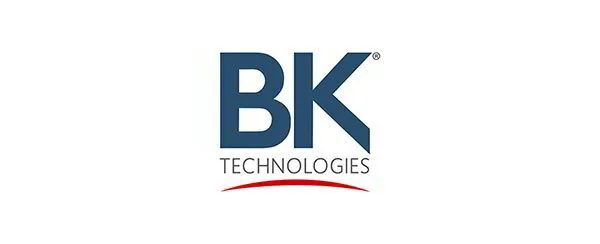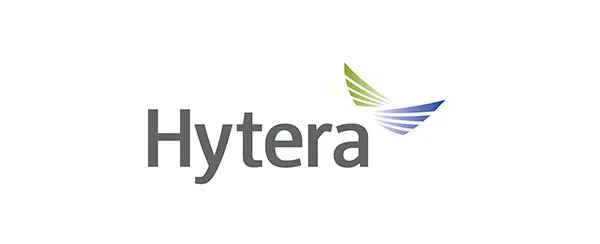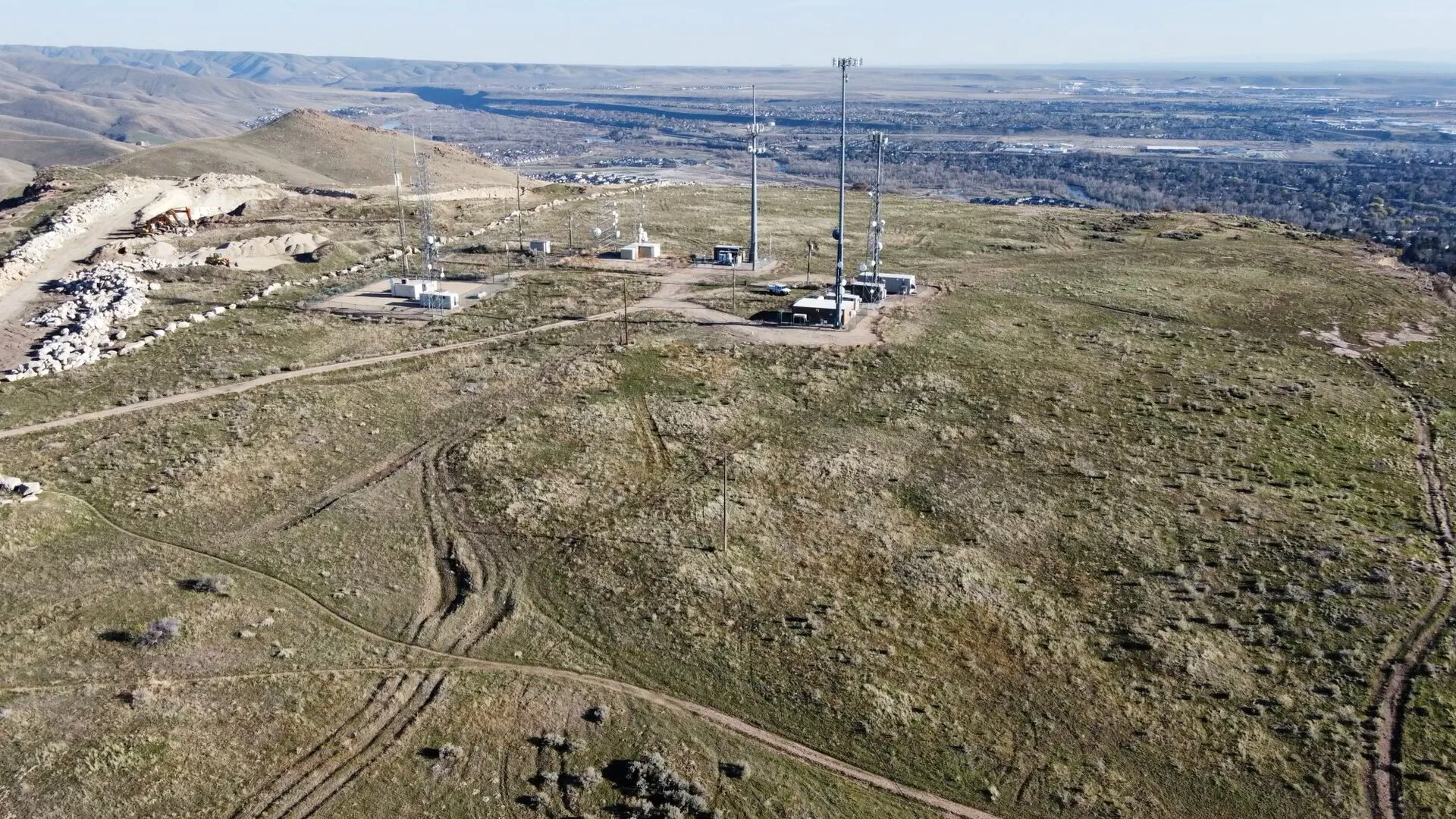
One of the Most Complete Communication Networks in the Northwest
White Cloud Communications Inc., an Idaho-based company with nearly 50 years of expertise, is headquartered in Twin Falls and operates satellite offices in Garden City, Burley, and Idaho Falls. We specialize in advanced two-way radio services, designing, developing, and delivering innovative solutions that boost productivity, enhance safety, and connect people in the toughest environments. Our mission is to provide seamless, reliable, and instant communication for businesses and communities across southern Idaho. With a focus on innovation, quality, and a customer-first mindset, we aim to be the trusted leader in wireless communication solutions.
Industries

ERCES Testing: Industry Insights
As a professional with over two decades of experience in wireless communications, I’ve seen how vital Emergency Responder Communication Enhancement Systems (ERCES) Testing is. This testing ensures the reliability of in-building communication systems, essential for emergency responders. ERCES Testing validates that systems meet national and local codes, providing responders with unfaltering communication during critical moments.
The Critical Importance of ERCES Testing
ERCES Testing is a cornerstone of public safety. It verifies that communication systems are not only operational but optimized for various environments. Buildings, with their complex designs and materials, can severely hinder radio signals. Proper ERCES Testing identifies these potential barriers and ensures that systems function seamlessly, offering uninterrupted communication lines for emergency teams.
At White Cloud Communications, we emphasize the significance of ERCES Testing in every project, assuring clients of the safety and efficacy of their systems. This guarantees both compliance with fire codes and confidence in lifesaving communication during emergencies.
Steps in ERCES Testing Process
ERCES Testing follows a well-defined process to ensure comprehensive evaluation:
- Initial Assessment: Review of building layouts and materials to identify potential communication obstructions.
- Signal Strength Measurement: Using specialized tools, measure signal strength across various building zones.
- Antenna Placement: Optimize placement to enhance signal reach and strength.
- System Performance Analysis: Test system under simulated emergency conditions to ascertain reliability.
- Code Compliance Check: Ensure that systems meet necessary national and local regulations.
What Qualifies as a ERCES Testing Emergency?
ERCES Testing emergencies arise when communication systems fail in operational checks, potentially compromising responder safety. Rapid action is necessary to rectify any issues to maintain seamless communication during actual emergencies.
Such situations require immediate reassessment and adjustments, ensuring that the system’s reliability is restored before being deemed functional. By addressing these emergencies promptly, we safeguard the communication network upon which emergency responders rely.
ERCES Testing: A Real-World Example
In a recent project, White Cloud Communications conducted ERCES Testing for a government building. Initial assessments revealed signal drop-offs in the basement and upper floors. By repositioning antennas and boosting system performance, we ensured unrestricted communication throughout the facility.
This case underscores ERCES Testing’s role in identifying and resolving potential communication failures, thus fortifying the safety framework of crucial infrastructures. It exemplifies how meticulous testing and adjustments can lead to optimized, reliable emergency communication systems.
Best Practices in ERCES Testing
Through years of professional practice, several best practices for ERCES Testing have emerged:
- Regular audits to ensure continued compliance and performance.
- Engagement with local authorities during testing phases to align with regional requirements.
- Use of state-of-the-art technology for accurate signal measurement and system analytics.
Adhering to these practices ensures that ERCES Testing is not only thorough but also consistently aligned with evolving regulatory standards and technological advancements.

Defining ERCS Testing
ERCS Testing, or Emission Reduction Credits System Testing, plays a significant role in regulating industrial emissions. As we at White Cloud Communications know from decades of experience, understanding these systems is crucial for industries aiming to balance growth with environmental responsibility. This process involves testing emissions limits and ensuring compliance with state regulations, while also offering facilities the flexibility to expand responsibly.
Why Is ERCS Testing Crucial?
ERCS Testing is pivotal in maintaining air quality standards by allowing facilities to trade emission credits. This ensures that total emissions remain within prescribed limits, fostering sustainable industrial growth. As communication specialists in various sectors, we understand the importance of such mechanisms in promoting both economic and environmental health.
What Does the ERCS Testing Process Involve?
The following steps outline the ERCS Testing process:
- Facilities undergo initial emissions measurement to establish a baseline.
- An analysis determines whether the facility can generate Emission Reduction Credits (ERCs).
- ERCs are documented and verified through a standardized registry system.
- Facilities aiming to expand can purchase ERCs to offset new emissions.
Each step requires strict adherence to regulatory standards, a practice we’ve grown familiar with through our collaborations across industries.
Challenges in ERCS Testing
Tackling ERCS Testing can pose challenges, particularly for businesses lacking dedicated environmental teams. From my professional experience, these hurdles often involve navigating complex regulatory landscapes and ensuring accurate emissions reporting. Moreover, acquiring ERCs can sometimes be competitive, with high demand in heavily industrialized regions.
Advantages of ERCS Testing for Businesses
By participating in ERCS Testing, businesses can benefit from:
- Enhanced regulatory compliance and sustainability reputation.
- Increased operational flexibility through the trading of ERCs.
- Potential cost savings by avoiding penalties for non-compliance.
For us at White Cloud Communications, such advantages underscore the importance of effective communication systems that help industries remain informed and efficient.
Industry Perspectives on ERCS Testing
Working in southern Idaho’s diverse industrial landscape, I’ve witnessed varying approaches to ERCS Testing. For instance, in the oil and gas sector, companies often view ERCs as a strategic asset, leveraging them to facilitate expansion while adhering to environmental standards. Meanwhile, other industries, such as healthcare and education, prioritize emissions reduction itself over credit trading, focusing on sustainability as a core value.
The Crucial Role of ERCES Maintenance Testing
As a seasoned professional in the wireless communication field, I’ve seen firsthand the pivotal role that ERCES Maintenance Testing plays in ensuring flawless communication during emergencies. In an unpredictable world, guaranteeing that systems are operational can literally mean the difference between life and death. These systems must be regularly maintained and tested to ensure they meet the requirements set by local authorities and that they function effectively during critical times.
At White Cloud Communications Inc., we know that periodic testing isn’t just a good practice–it’s a necessity. Testing involves not only checking signal strength across various building zones but also ensuring that all system components, from antennas to cables, are in top-notch condition. Our experience has shown that consistent maintenance greatly reduces system failures and extends the life of the equipment.
Moreover, we’ve encountered numerous scenarios where inadequate testing led to costly system overhauls. Learning from these challenges, we’ve developed a rigorous testing protocol that helps mitigate such risks. These practices not only protect the investment made into these systems but also serve the greater good by enabling swift and effective emergency response.
ERCES Maintenance Testing should be seen as a proactive measure, not just a regulatory compliance task. By prioritizing maintenance, we not only align with industry standards but also elevate the resilience and preparedness of any facility that relies on these critical communication systems.
ERCES Maintenance Testing: What’s Involved?
Many might wonder, “What’s involved in ERCES Maintenance Testing?” As experts in the field, White Cloud Communications Inc. has developed a detailed process to ensure nothing is left to chance. Firstly, it’s crucial to conduct acceptance testing post-installation to verify that the system performs as expected. This involves measuring radio coverage on each floor and ensuring all requirements are met.
Following acceptance, annual testing is a must. This routine includes retesting after renovation or changes to building structures that could affect radio signal propagation. It’s also essential when there are updates to the frequencies allocated by local fire departments. This comprehensive approach safeguards the reliability of communication systems throughout their lifecycle.
A critical part of our process involves servicing specific components such as amplifiers, batteries, and antennas, which require regular inspection and care. By addressing these elements, we prevent potential failures that could compromise system efficiency. Moreover, we maintain meticulous records of each test, allowing us to track performance and identify areas needing improvement.
Professional Perspectives on ERCES Testing
From my 20 years of experience at White Cloud Communications Inc., I’ve learned that successful ERCES Maintenance Testing relies heavily on collaboration with local authorities and other stakeholders. This partnership ensures compliance with the ever-evolving industry standards and fosters trust with our clients. Our hands-on approach means we’re not just service providers but trusted advisors in enhancing public safety.
One perspective is that the regulations surrounding ERCES can vary significantly between jurisdictions, creating challenges for standardized testing. By working closely with the Authority Having Jurisdiction (AHJ), we navigate these complexities, ensuring each system adheres to local codes and standards. This alignment is not only a legal requirement but also a moral one, as it affects the community’s safety.
On the ground, our technicians often share anecdotes of how proper maintenance prevented major issues during emergencies. In one instance, during a massive storm, the system’s robust performance was praised by emergency services. Such stories reinforce our commitment to providing reliable communication solutions that communities can depend on when it matters most.
Emphasizing the human aspect, testing extends beyond technical proficiency–it’s about building confidence in the systems we install and maintain. It’s this blend of technical skill and empathy that sets White Cloud Communications Inc. apart in the industry.
How to Conduct Effective ERCES Maintenance Testing
Performing ERCES Maintenance Testing can be distilled into several key steps to ensure thoroughness and compliance. Here’s a simplified process used at White Cloud Communications Inc.:
- Planning: Develop a detailed testing plan, identifying all areas and components of the ERCES that require assessment. Consult with the AHJ to ensure all regulatory requirements are considered.
- Equipment Preparation: Assemble necessary testing gear, including calibrated radios, and ensure safety measures are in place.
- Testing Execution: Conduct thorough radio coverage tests, checking signal strength and performance across all building areas. This step is vital to uncover coverage gaps or technical deficiencies.
- Inspection of Components: Examine and service antennas, amplifiers, and power supplies as per manufacturer guidelines.
- Documentation and Reporting: Record all findings meticulously and submit a detailed report to the AHJ for review and certification.
Following these steps, we ensure that the systems are ready to face any eventuality, proving their reliability when they are needed most. Each test not only checks compliance but also contributes to the ongoing improvement of our communication solutions.
What Are Common Challenges in ERCES Maintenance Testing?
ERCES Maintenance Testing presents several challenges, both anticipated and unforeseen. A common issue is interference from other electronic devices or changes in building infrastructure that can disrupt signal paths. Because radio frequencies are shared with numerous devices, maintaining a clear, interference-free signal requires constant vigilance and expertise.
Another significant challenge is the rapid technological advancements that necessitate continuous updates and training. As technology evolves, so too must our testing methodologies to ensure that we are leveraging the most efficient tools and techniques. White Cloud Communications Inc. invests heavily in training and development to ensure our team is always ahead of the curve.
Climate and environmental conditions also play a role; extreme weather can affect signal integrity and equipment performance. We often deploy additional checks and maintenance during winter months or after severe weather events to ensure ongoing system reliability. Such proactive measures help us address these challenges head-on, ensuring minimal disruption to communication lines.
![]()
What makes ERCES Testing so crucial for public safety?
ERCES Testing is vital as it ensures emergency responder communication systems are reliable during critical times. Imagine a situation where emergency services can’t communicate effectively due to signal obstructions in a building. This could delay response times and potentially endanger lives. By conducting regular ERCES Testing, we identify such issues and make necessary adjustments to prevent them. White Cloud Communications specializes in these tests, assuring our clients that their systems are compliant with both local and national regulations, offering peace of mind and confidence in their emergency preparedness.
Can you explain the steps involved in the ERCES Testing process?
Absolutely! The process is comprehensive: we begin with an initial assessment of the building layout to identify potential signal blockages. Next, we measure signal strength across different zones using specialized tools. If necessary, we adjust antenna placements for optimal signal reach. We then test the system under simulated emergency conditions to ensure reliability, and finally, verify that the system complies with all relevant codes. This thorough approach guarantees robust communication channels are available when needed most.
What constitutes an ERCES Testing emergency?
An ERCES Testing emergency occurs if a system fails during operational checks, which could jeopardize responder safety. For instance, if signal testing reveals unexpected dead zones or significant drop-offs, immediate action is required. This involves re-evaluating the system and making adjustments until reliability is restored. Acting swiftly in such situations is critical to maintaining the integrity of communication networks that emergency responders rely on.
What are some best practices for conducting ERCES Testing?
At White Cloud Communications, we’ve developed several best practices. Regular audits ensure compliance and performance. We engage with local authorities to align testing with regional standards and employ advanced technology for precise signal measurements. These practices help us stay ahead of regulatory changes and technological advancements, ensuring that ERCES Testing remains thorough and efficient.
How does ERCS Testing differ from ERCES Testing?
While ERCES Testing focuses on enhancing communication systems for emergency responders in buildings, ERCS Testing deals with emission reduction credits to regulate industrial emissions. It’s crucial for industries that want to balance growth with environmental responsibility. White Cloud Communications understands the nuances of both, ensuring systems meet the necessary standards and are effective in their respective fields.
Why is ERCS Testing important for industries?
ERCS Testing is critical as it helps maintain air quality standards by allowing businesses to trade emission credits, ensuring overall emissions stay within limits. This approach fosters sustainable industrial growth, balancing economic and environmental health. For industries in southern Idaho, like those we serve at White Cloud Communications, it’s a key part of their environmental strategy.
What challenges are commonly faced in ERCS Testing?
Navigating the regulatory landscape and ensuring accurate emissions reporting are significant challenges, especially for businesses without dedicated environmental teams. Additionally, the demand for emission reduction credits can be competitive in industrial regions. At White Cloud Communications, we emphasize the importance of clear communication solutions to overcome these hurdles efficiently.
Why is ERCES Maintenance Testing necessary?
ERCES Maintenance Testing is crucial because it ensures the system’s reliability during emergencies. Regular maintenance not only checks signal strength but also ensures that components like antennas and cables are in optimal condition. This proactive approach prevents costly overhauls and aligns with industry standards, ultimately safeguarding public safety.
What does the ERCES Maintenance Testing process involve?
Our process includes acceptance testing post-installation to verify performance, followed by annual tests. We also retest after any building renovations or changes that could affect signal propagation. By servicing components like amplifiers and antennas regularly, and maintaining detailed records, we ensure long-term system reliability and compliance with regulatory requirements.
What are some professional insights on the challenges of ERCES Maintenance Testing?
The regulations can differ by jurisdiction, creating standardization challenges. By collaborating with local authorities, White Cloud Communications navigates these complexities, ensuring compliance with local codes. This is not just a legal requirement but also a moral obligation to ensure community safety. Our technicians often share stories where proper maintenance prevented issues during actual emergencies, reinforcing the importance of this work.
How can effective ERCES Maintenance Testing be conducted?
Conducting effective maintenance involves planning a detailed testing strategy, preparing the necessary equipment, executing comprehensive radio coverage tests, inspecting components, and reporting results. This ensures systems are prepared to face any eventuality. Each step not only checks compliance but also contributes to the ongoing enhancement of communication solutions we provide at White Cloud Communications.
What are common challenges in ERCES Maintenance Testing?
Some challenges include signal interference from other electronic devices and rapid technological changes that require ongoing updates and training. Environmental factors like extreme weather can also affect system performance. At White Cloud Communications, we address these issues proactively with continuous training and by conducting additional checks during seasonal changes, ensuring minimal disruption to communication systems.
Resources
- National Fire Protection Association – The NFPA provides standards and information related to fire safety and emergency communication systems.
- Environmental Protection Agency – The EPA regulates environmental standards, including emissions testing and air quality monitoring.
- Occupational Safety and Health Administration – OSHA sets and enforces workplace safety regulations, which may include guidelines for communication systems testing.
- Federal Communications Commission – The FCC oversees communication regulations, including radio frequency testing and licensing.
- U.S. Fire Administration – The USFA provides resources and training for fire service professionals, including communication system maintenance guidelines.
We are certified dealers of the following brands:

